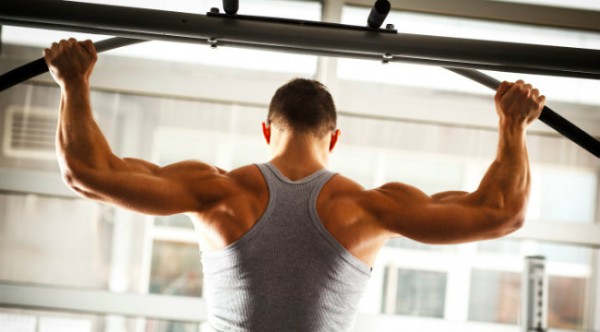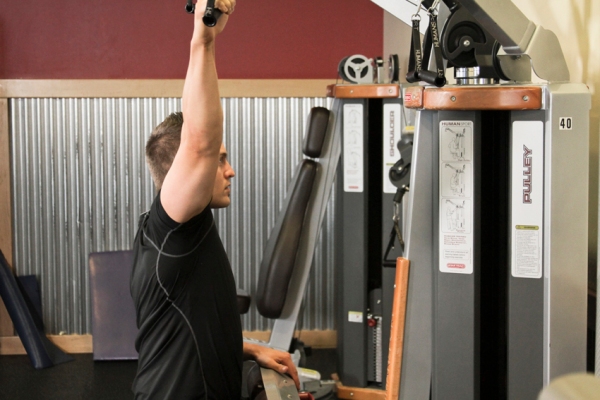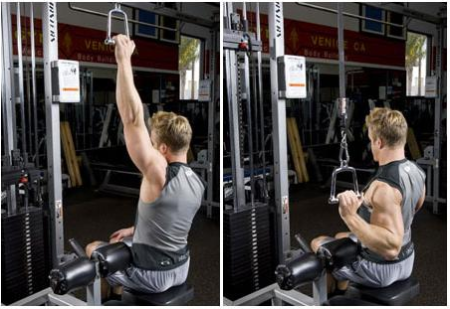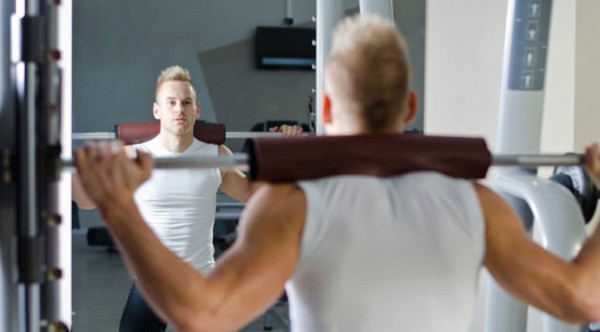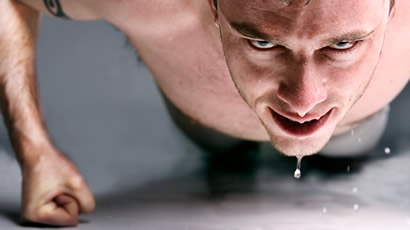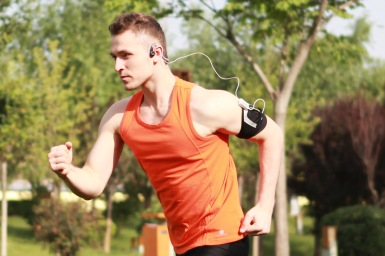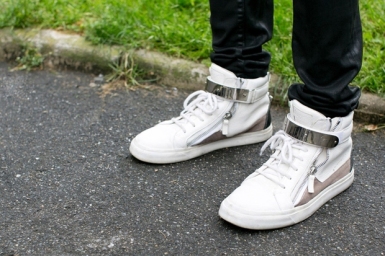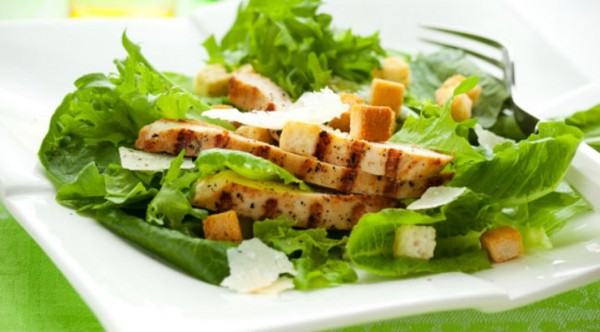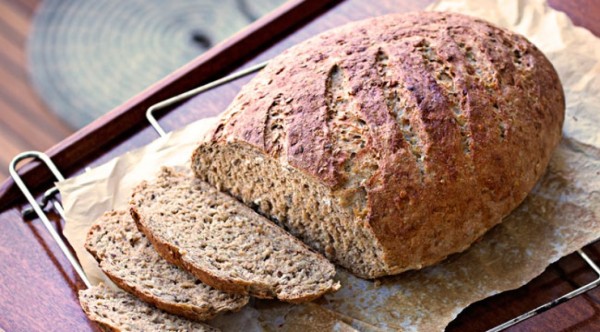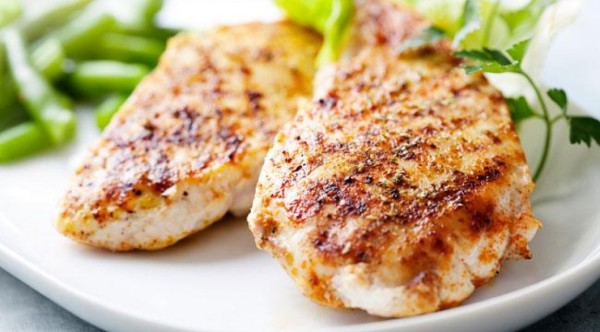Vegetable Noodles Soup
This soup is just as good for dinner as it is for lunch — it’s warming and comforting and perfect for a rainy day.
Ingredients
2 tablespoons extra-virgin olive oil
1 rib celery, sliced (about 1 cup)
1 medium carrot, sliced (about 3/4 cup)
1 clove garlic, smashed
1/4 medium onion, about 1/2 cup
1/4 teaspoon kosher salt
1/3 cup orzo or other small pasta or egg noodles or broken up spaghetti
4 cups low-sodium chicken broth (1 quart box, or 2 cans)
Small handful fresh parsley leaves, basil or dill, chopped (about 2 tablespoons)
1/2 lemon, juiced (about 1 tablespoon)
Directions
Heat the olive oil in a medium saucepan over medium heat; add all the vegetables, garlic and onion. Season with the salt, and cook until tender, about 6 minutes. Add the pasta and cook until slightly toasted and golden, about 2 minutes. Add broth, and bring to a boil over high heat. Cook, covered, until pasta is just tender, about 8 minutes.
Stir in whatever herb suits you (or your young eater) and lemon juice. Season with pepper and additional salt, to taste. Fill thermos, pack in a lunch sack with crackers and cheese sticks and send off to school.
TIP: This soup freezes well, so freeze any leftovers or make a double batch to have plenty on hand. Also, you can stir in some cooked chicken or mini-meatballs, if desired, for another meal.
4 Moves To Increase Your Back Width
Increase your spread for the V-taper physique all bodybuilder’s covet.
Nothing looks quite as ridiculous as huge, ripped biceps attached to a back with the width of a spider monkey. Building an enormous, wide back is crucial to your overall aesthetic. Not only is a wide back imposing in and of itself, but it also makes your waist look smaller, increasing the ever important V look all bodybuilders covet. On your next back day, add in these 4 exercises and watch your back width explode.
STRAIGHT-ARM PUSHDOWNS
These were a favorite of Iron Legend Doug Young. The straight-arm pushdown is one back exercise where the lats are almost exclusively isolated, there is very little bicep activation like most back exercises. I have found that Lat development really explodes when these are incorporated. Use the straight bar attachment on the weight stack, keep the arms straight and lower the bar to the thighs while leaning forward at the top (emphasizing stretch). Do 5 sets of 15 reps.
ONE-ARM LAT PULLDOWNS
These effectively isolate the lats, resulting in a serious increase in back width. Put the handle attachment on the lat pulldown stack. Grasp it with one hand and fell a big stretch on the top. Pull it down so the handle is at shoulder level. One-arm lat pulldowns should also be done with the strictest of form, and muscle intention is key here. Feel the lats doing the work. Do 5 sets of 10-15 repetitions.
WIDE-GRIP PULLUPS
Wide grip pullups are absolutely essential to developing an impressively wide back. They are more lat intensive than their normal grip counterpart. To perform wide grip pullups grasp the pullup bar wider than shoulder width, and make sure to come all the way down on each rep. Use muscle intention to really feel your lats doing the work. Pull yourself all the way up so that the pullup bar is at around chest level. Do these strict (no swinging, go all the way down and all the way up.) Once you can do 10 strict wide grip pullups, start adding weight. Do 5 sets to failure in this exercise.
V-GRIP PULLUPS
These are not as popular as they once were, they used to be a staple in back training. Let’s bring back this oldie but goodie. Put the V-Grip attachment over the top of the pullup bar, pull yourself up and touch your chest to the v-bar attachment. Concentrate on using your lats and upper back to pull yourself up. Keep these strict, no swinging. Do 5 sets to failure.
As you can see, when trying to develop a wide back strict form and muscle intention are key. Add these exercises in on your back day and watch your spread grow.
One-Arm Lat Pulldown
Build symmetry in your back with this unilateral variation of a classic machine move.
Are you finding that your lats are lacking a little in the symmetry department? In other words, is one side more developed than the other?
Training bilaterally, as in with a fixed barbell or long bar attachment, can have the effect of allowing the stronger side of your body do slightly more work than the weaker one, creating a visual imbalance in your musculature.
Unilateral training (training each side independently) can solve this problem, creating optimal symmetry, and the one-arm lat pulldown is a great exercise for attacking this issue.
TOOLS
- Lat pulldown machine
- D-handle attachment
EXECUTION
- Attach a D-handle and position yourself as you would for a regular lat pulldown.
- Reach up and grasp the handle with a neutral grip (palm facing in), with your torso fully erect, arm fully extended and chest out. (You may need to stand up first to pull the handle to you, then sit down on the seat.)
- With your working arm fully extended, lean back 10–15 degrees and look straight forward.
- Drop your shoulder by depressing your clavicles, and avoid pinching or shrugging your neck.
- Squeeze your shoulder blades together, take a deep breath and pull the handle to your upper chest, focusing on the lats and pulling your elbow back and down.
- Pause, then slowly release the bar back to the start.
TIPS
- Initiate the pull with slow, even force from the lats; jerking will cause your lower back and biceps to initiate the movement.
- For variation and to hit the muscles from a slightly different angle, change your grip so your palm faces forward or backward.
- To increase your lat involvement and range of motion, lean back as you pull through the movement.
- To focus on the middle of your upper back (rhomboids, traps and lats), lean farther back and start your pull with your torso at a 45-degree angle.
- For increased rear delt activation, flare your elbow out to the side, keeping it high throughout.
THE HIT LIST
Primary Muscles: Latissimus Dorsi, Teres Major, Upper Trapezius, Middle Trapezius, Lower Trapezius, Rhomboids
Secondary Muscles: Posterior Delts, Biceps Brachii, Brachioradialis, Brachialis, Wrist flexors
Shock Your Muscles With Unilateral Training
Crush your muscle and strength growth plateaus with this alternative lifting technique.
Are your workouts getting stale? Are you having trouble getting pumped? Have your strength gains stalled out? While there are many reasons why you may find yourself in this situation, much of the time it’s the result of the ineffectiveness of your current training program. At one time you may have thrived on exactly what you are doing now, but you may have reached a point where a change is necessary in order to continue progressing.
The body is an adaptive machine and if you continually provide the same types of stimulation, your body will quickly adapt and fail to respond to your workouts. You must keep finding ways to provide a novel “stress” to your body and muscles in order to force “overcompensation” in the form of increased strength and hypertrophy.
There are many ways to go about revamping and revitalizing your workout routine, but one of the best ways I’ve found to wake up muscles that are napping on the job is by taking things one at a time. Unilateral training, or training one limb/side of the body at a time, is one of the most effective methods available for stepping up the intensity of your workouts and helping to push past plateaus in both size and strength.
UNILATERAL EXERCISES HAVE SEVERAL ADVANTAGES OVER STANDARD TRAINING THAT CAN CATAPULT YOU TO NEW LEVELS:
(1) You will be able to concentrate and focus more intensely on the target muscle, which in and of itself can lead to better gains.
(2) You will recruit more muscle fibers and fatigue more motor unit pools with each rep than with standard two-armed training.
(3) You will take steps toward overcoming strength imbalances between your right and left sides. For example, if your right biceps is stronger than your left, whenever you do a standard barbell, cable or preacher curl, your right arm will dominate the movement, especially as you fatigue, effectively reducing the stimulation that the left biceps receives. This only serves to enhance your strength imbalance as well as cheat your left arm out of growth.
However, by utilizing unilateral exercises, you will be forcing the weaker side to do all of the work on its own, rather than constantly relying on the dominant side to assist in lifting and lowering the weight. Additionally, when you begin to even out the level of strength between corresponding muscles on both sides of your body you will become stronger in all of the standard two-arm/leg exercises.
I’m not saying that you should abandon standard training for a completely unilateral approach; however, I do believe that everyone should incorporate at least one single-limb exercise at each bodypart workout. I generally recommend that you perform unilateral exercises toward the end of your routine for a particular body part. I am sure that most of you are familiar with such unilateral exercises as concentration curls, one-arm rows and kickbacks, but you are truly missing out if you have not tried such muscle-mashers as single-legged leg presses or squats, single arm dumbbell shoulder presses, single arm crossovers, single arm lat pulldowns, single arm dumbbell upright rows, etc.
These exercises will stress your muscles in a new and different way, forcing your body to “overcompensate” and grow larger and stronger. Additionally, you will effectively engage many of the stabilizing/balancing muscles by training one side at a time which will only serve to provide you with a more “complete” looking physique as well more total body strength and coordination.
Here is a list of unilateral exercises to incorporate into your workouts:
- Chest: single arm machine chest press, single arm cable flye, single arm cable crossover, single arm pec deck flye
- Lats: single arm dumbbell row, single arm seated cable row, single arm pulldown
- Delts: single arm dumbbell press, single arm machine press, single arm dumbbell/cable lateral, single arm dumbbell upright row
- Biceps: single arm cable curl, single arm preacher curl, single arm dumbbell curl
- Triceps: kickbacks, single arm lying/seated extensions, single arm pushdowns
- Legs: single leg squats, single legged leg press, single leg extensions, step-ups, single leg lying/seated/standing leg curls, single leg stiff deadlifts
- Calves: single leg seated raise, single leg standing raise, single leg calf press
- Traps: single arm dumbbell/machine shrugs, dumbbell cleans
- Lower back: dumbbell deadlifts
- Forearms: single arm dumbbell wrist and reverse wrist curl
I’m sure if you think about it you can come up with dozens more unique unilateral exercises of your own. Start by adding one unilateral exercise to each bodypart workout and if you are finding that you are getting excellent results, perhaps add a second one. Actually, I have had some of my very best and most intense workouts by training exclusively unilaterally. Just remember that some unilateral exercises can be difficult to perform at first and until you have it mastered, you might not get the full benefit from it.
It certainly takes a few workouts to get used to single leg squats and deadlifts, but once you do, you can rest assured that you will see new gains in muscle and strength rather rapidly. Stick to each new unilateral exercise for about 6-8 weeks before you switch to another, but don’t be afraid to “play with” and tweak your form a bit each workout until you find what feels best to you.
BACK ATTACK: THE BARBELL ROW
We break down this lift and give some practical advice on how to build it into your program.
Like the bench press is the king of chest exercises, the barbell row is ruler of its domain for the lats and traps. With most other lat exercises, you don’t directly fight gravity – a pulley eases the struggle on cable exercises. And with the barbell row, you can really load up on the weight, making it great for upper back development. From a true strength standpoint, this exercise is a staple of most elite athlete programs. And when it comes to sheer size, no lifter should leave this lift out of his routine.
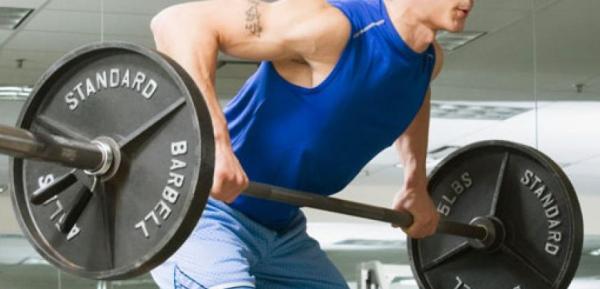
HOW TO:
Take a wide-grip palms down approach while stabilizing your feet at shoulder width and bending your knees about 15 degrees. Your bent-over position should not be parallel with the ground but at about a 60 degree trunk angle. If you start by retracting (pulling in) your scapulae you will further isolate your lats, but you will need slightly lighter weight. Some prefer the rounded upper back start and retract during the lift to make the traps work in conjunction with the lats. In either case, stick your chest out, flatten your lower back and pull the weight hard into your upper abdomen while sending your elbows backward. Return the weight under control and pause to avoid momentum from taking over.
VARIATIONS:
While the barbell version is superior for overall development, using cable and dumbbell variations works well too. For a more refined barbell version that uses a little more biceps, use a reverse grip (palms up) just outside your hips on the same bent over row movement. Your pull will be more to your lower abdomen and shift the emphasis to your lower lats, with some help from your bi’s. Some gyms also have a modified barbell with neutral handles.
OVERVIEW:
Many people avoid the bent over row as it requires more lower back and ab control to maintain a solid posture. Also, it is often thought of as an athletic lift and many gymgoers still avoid it like the plague. But if you’re not rowing with barbells, you’re limiting the progress you can make, both in muscle size, shape and quality.
TIPS:
- Minimize the amount of momentum you use, or else you risk jeopardizing your posture. This can lead to injury, or at the very least, an ineffective set. Experienced lifters may use 1-2 calculated cheat reps at the end of a set.
- Change grips and hand spacing from set to set, or workout to workout, in order to encourage complete back development.
- If lat development is high on your priority list, always aim to perform this exercise first in your back routine when you are at your strongest.
- Complete your back routine with pulls through different planes such as the seated cable row, lat pulldown, standing cable low row and straight-bar lat pulldown.
- As you progress, try to build in advanced techniques such as forced reps, rest-pause and negatives to elicit even greater gains out of your lats and middle back.
PROGRAM IT:
To get all of the benefits that the barbell row has to offer, perform it first in your back routine, doing 8-10 reps for four sets. You should be aiming for positive muscle failure at that range – if you can do 11 reps, you’re going too light.
Exercise Sets Reps Barbell row 4 8-10 Seated cable row 4 10 Lat pulldown 4 10 Standing cable low row 4 10 Staight-bar lat pulldown 3 12
THE ULTIMATE LAT WORKOUT FOR A BIGGER BACK
Add impressive back width for an intimidating V-taper physique and wings that’ll make the angels jealous.
One of the most impressive aspects of the bodybuilder’s physique is the infamous “V” taper. You know, the type of shape that makes it look possible to jump of a cliff, spread you lats, and do a little hang gliding. Think about the physiques of some of our most massive Mr. Olympias…Lee Haney, Dorian Yates, Ronnie Coleman, and Jay Cutler. They all shared one thing in common…backs so wide that each lat had its own zip code! Problem is, truly wide lats are a rare commodity indeed and although I see dozens of trainees toiling away in the gym doing set after set on the lat pulldown machine, sometimes with the whole weight stack, so few of them are challenging the width of a single doorway. So where does the problem lie? Well, as I see it, there are several.
WRONG EXERCISES
Although the lat pulldown is a wonderful back movement that certainly has its place, it can not replace the true back builders like chins, pullups, bent rows, seated pully rows, T-bar rows, dumbell rows, and deadlifts. Those that do not make these exercises the foundation of their back routine are not only narrow minded, but will always be narrow period!
POOR FORM
This is perhaps the most prevalent problem in faulty back training and the number one reason, in my opinion, that spectacular back development is so rare. Usually one or all of the following mistakes are made by most when training back…1) Too much weight is used! Stop swinging and jerking and control the exercise throughout the entire ROM, 2) Failure to “set the body” correctly during the movement! Keep your chest out, shoulders back, and a slight arch in your lower back…and you must keep this position throughout the movement, 3) Not using a thumbless grip! By bringing your thumb to the same side of the bar as the rest of your fingers you will effectively take some of the forearm flexors and biceps out of each lat exercise. Reinforce your grip with lifting straps if you must.
LACK OF ANGLES AND GRIP VARIATIONS
The back is a very complex group of muscles and for full development you must assault it from unique positions and angles as well as utilize the effects that different grips provide. You should include one exercise in which you pull vertically (pulldowns, pullups), one in which you pull horizontally (seated pully rows, seated machine rows, Hammer rows), and one in which you pull from the floor in a “bent” position (bent barbell rows, T-bar rows, dumbell rows, spider rows). In addition, perform one exercise with an underhand grip, one with an overhand grip, and one with a parallel grip.
NOT USING PULLOVERS AND STIFF ARM PULLDOWNS
Both of these exercises isolate the lats and teres muscles right where they tie into the armpit, and they do so without any bicep or forearm activation. This is very advantageous as they can be used to “pre-exhaust” the lats before rowing and pulldown exercises are performed, or, they can be used at the end of a back workout to get just a bit more out of those lats when the biceps are beginning to tire.
10 Ways to Lose Weight Fast
Tweak Lifestyle
It’s a familiar story: You pledge to honor a daily elliptical routine and count every last calorie. But soon, you’re eating cupcakes at the office and grabbing happy hour mojitos, thinking,Oops, diet over.
There is a better way: Swap the all-or-nothing approach for one or two healthy switch-ups in your daily routine. “Doing this can lead to more weight loss than you ever imagined,” says Marissa Lippert, RD, author of The Cheater’s Diet.
In fact, we talked to readers who knocked off 10, 25, even 60 pounds with some easy tweaks. Borrow their slim-down secrets to transform your body the real-world way.
1. Get fired up
“I loaded my iPod with jams that make me look forward to going to the gym. They energize me, allowing me to pick up speed on the elliptical—and because I want to hear my entire playlist, my workouts are longer now. Two months later, I’m down 13 pounds and have killer legs.” —Kara Marshall, York, ME
2. Pile on the veggies
“By adding vegetables to the foods I love—like eating pizza topped with arugula and green peppers instead of pepperoni—I became so full so quickly that I no longer had room to eat things like chips or super-rich desserts. I said good-bye to four dress sizes!” —Janessa Mondestin, New York City, NY
3. Downward dog it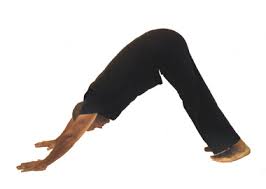
“Yoga has become the best thing for my relationship with food and my body. From practicing it several times a week, I’m now more in touch with my hunger cues—so I eat intuitively and stop when I’m full. I’ve gone down a jeans size, and my cellulite has disappeared!”—Jessica Nicklos, Morgantown, WV
4. Healthy up your happy hour

“After work, my colleagues and I always grabbed dinner—and it was usually deep-fried. Then we changed things up. Instead of nights out, we started walking and running around a local track. A year later, I’m down 40 pounds.”—Ellen Setzer, Cleveland, OH
5. Run your butt off
“When I wanted to fit into my skinny jeans again, I started running 20 minutes a day during my lunch hour. In two months, I’ve lost 20 pounds, have tons of energy, and just finished my first 5K. Those jeans? They’re too big now!” —Lauren Castor, Anniston, AL
6. Don’t supersize it
“When going out for fast food, I used to get the large-size value meal. Now, I satisfy a craving by ordering just one item: a small order of fries or a six-piece box of chicken nuggets. So far, I’ve shaved off 16 pounds in seven weeks, and I’m on track to being thinner than my high school self for my 10-year reunion later this year.” —Miranda Jarrell, Birmingham, AL
7. Save room for your dessert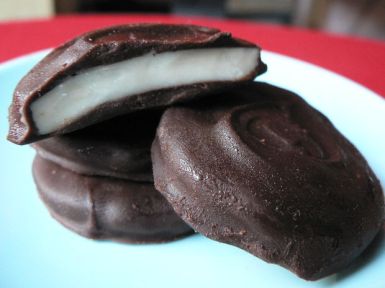
“I budget for the treats I love. By eating healthy snacks like carrots and hummus, I have calories to splurge on a piece of chocolate and glass of wine each night. And I’ve still managed to lose 20 pounds in three months.” —Elaine Higginbotham, Fort Worth, TX
8. Brave a new class
“Two months ago, I started going to Zumba twice a week. The crazy dance routines really tone your muscles—especially legs and abs—and give you a heart-pounding cardio workout. Eleven pounds later, I’ve almost reached my goal weight.” —Morgan Howe, Rochester, NY
9. Nix nighttime eating
“Each time I needed to lose the baby weight, I stopped eating after 6:30 p.m. five nights a week. The other two evenings were reserved for nights out. Most of what I’d eat at night was junk food anyway, so it took only two months to get my pre-baby body back.” —Deborah Gilboa, Pittsburgh, PA
10. Walk with Spot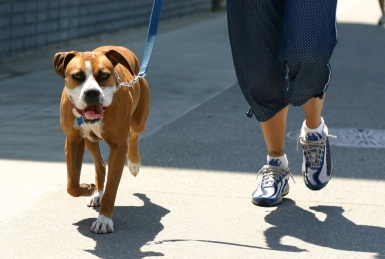
“My dog and I go for a walk every day, even if it’s for just 10 minutes around the block. When the weather is horrible, her enthusiasm gives me the incentive to get out when I wouldn’t dare lace up my sneakers otherwise. All the walking adds up: I’ve lost more than 50 pounds this past year.” —Jamie Altholz, Denver, CO
Valentine Sweet Treat
For the chocolate and raspberry brownie:
250g chocolate
60g flour
60g finest-quality cocoa powder
½ tsp baking powder
3 large eggs
plus 1 extra egg yolk
300g caster sugar
250g butter
250g fresh raspberries
for the hazelnut crumb
200g hazelnuts
For the orange chantilly cream:
200ml double cream
20g caster sugar
Zest 1 orange
1 tsp vanilla essence
Instructions
Line a baking tin about 23cm x 23cm and preheat oven to 180C/350F/gas mark 4.
Chop 50g of the chocolate into small chips, then melt the remaining 200g in a bain-marie (a bowl set over a pan of simmering water). Remove from the heat once melted.
Sift together the flour, cocoa powder, baking powder and a pinch of salt.
Whisk the eggs and extra egg yolks lightly.
Beat the sugar and butter in a food mixer until pale, fluffy and creamy.
With the mixer running on slow, add the beaten egg a little at a time, speeding up in between each addition. Continue beating the batter until it has a soft, sheeny appearance and has increased in volume.
Stir in 200g of the raspberries as well as the melted and chopped chocolate.
With a large metal spoon gently fold in the flour and cocoa powder using a figure of eight movement, then scrape the mixture into the prepared tin and smooth the top.
Bake for 30 minutes until the centre is slightly sticking to a skewer.
Toast the hazelnuts in a 170C/325F/gas mark 3 oven until golden, then leave to cool.
Tip the hazlenuts into a clean tea towel and rub vigorously to remove the skins before adding to a food processor and blitzing until you have crumbs.
Whip the cream and sugar together until thick.
Add the orange zest and vanilla and whip again until it will hold semi-stiff peaks.
Taste and add more orange or vanilla essence if needed. Set aside in a cool place.
Serve brownies with a generous dollop of the orange chantilly cream on one side.
THE LAWS OF FAT-BURNING
Want to see your six-pack again – or for the first time ever? You’ll find all you need to know to get superlean in a dozen simple rules.
No question about it, burning fat is a 24/7 endeavor. To keep the fires hot, you need to eat every 2-3 hours throughout the day. Not only that, but you must choose the right foods in the right amounts to keep your metabolism revved up so your six-pack will be ready for its close-up. The way we see it, there are some fundamentals – laws, if you will – that are all you need to shed that unwanted blubber from your midsection and elsewhere. Most of them are nutrition-driven, but training comes into play as well. Your mass-gaining phase is over for the time being; now it’s time to get lean. These laws of fat-burning will help get you there.
6 WAYS TO BURN MORE FAT
No need to thumb through volumes of fat-burning research to get the physique you want. Inject these six tips into your current routine to get lean in a hurry.
You’ve put in the brutal, twice-a-day workout sessions, eaten enough chicken breast and steak to support a small farm, and lined up the correct supplements like a chemical engineer. Now you’re left with mounds of protein-infused muscle covering your body, a true physical fitness achievement. Yet like a supermodel draped in a heavy trench coat, the goods are hidden from sight by a layer of fat. How do you shed the blanket and allow onlookers to gaze in awe at your accomplishments? Here are six steps to take for your big reveal.
1. START YOUR ENGINE
The best way to win a race is to start you motor early. People have told you since you were a kid that breakfast is the most important meal of the day. What they probably didn’t tell you was that people eat about the same amount of food each day. By starting that process earlier, you’ll find that you’re not playing catch up later in the day or eating unhealthy foods in emergency hunger mode. Having breakfast will jump start your metabolism, allowing the muscles you’ve built to be nourished while initiating the fat burning process. Remember: the early bird gets the fat-busting worm.
2. GRAZE PHASE
Besides enjoying an early, substantial breakfast, the best way to burn fat is to set up an eating schedule of 5-8 small meals spread out a few hours apart throughout the day. This style of consumption, also referred to as “grazing,” provides a constant flow of nourishment to the muscles, keeping your metabolism surging throughout the day. Having “three squares a day,” such is the custom in most places, means more total calories at each sitting, making it tougher for your body to digest food for fuel and harder for your metabolism to catch up. Smaller meals, more often is definitely the way to go. Eating this way also decreases the risk of overeating.
3. MIX IT UP
To bridge the fat burning process from the kitchen to the gym, structure a workout that keeps the fire stoked. The best way to transform a normal, muscle-building routine into a super charged fat-burning workout is to mix typical resistance exercises with bodyweight movements. This added challenge brings out an increased cardiovascular experience, leading directly to fat loss and heightened endurance. After massive bench press reps throw in a set of push ups. Following a set of cable rows, add some pull-ups. Dips will follow triceps extensions, and walking lunges will insure the leg press did its duty.
4. GO HERBAL
In addition to following your usual lower-carb, high protein diet, it helps to add in green tea to push your fat-burning to a new level. Green tea, taken in capsule form or as a drink, continues to yield new and exciting benefits for physique-minded individuals and is one of the most research-affirmed supps you can have.
5. ZERO IN ON TARGET AREAS
Spot reduction, which until recently was considered a myth, can prove to be an effective aid for fat loss. By targeting your stubborn areas with some continuous, high-rep training and following that immediately with 30 minutes of cardio, you can mobilize more fat from the trained area. Not a believer? A study conducted at the University of Copenhagen (Denmark) had male subjects perform single-leg extensions for 30 minutes straight with light weight. They found that subcutaneous fat cells (those just under the skin) in both the exercising and resting thighs. The working leg had a significant increase in blood flow to and lipolysis from the subcutaneous fat cells. In other words, the fat cells surrounding the working muscle released more fat into the blood stream, meaning more fat is being used as fuel. The cardio that follows is to keep that fat from re-depositing itself on the premises!
6. CARDIO BURSTS
One great way to get the fat burning benefits of running while performing a standard weight training routine is to insert short, intense bouts of cardio throughout your workout. These “bursts,” placed every 15 minutes during an hour long routine, help rev your metabolism both during and after your workout. Think of it as extended-rest interval training. One way to do this would be to complete a 90-second sprint on a treadmill after every exercise in your normal 8-10 exercise routine. This is also one way to get your cardio in without spending an additional 20-30 minutes in the gym after your last rep.

